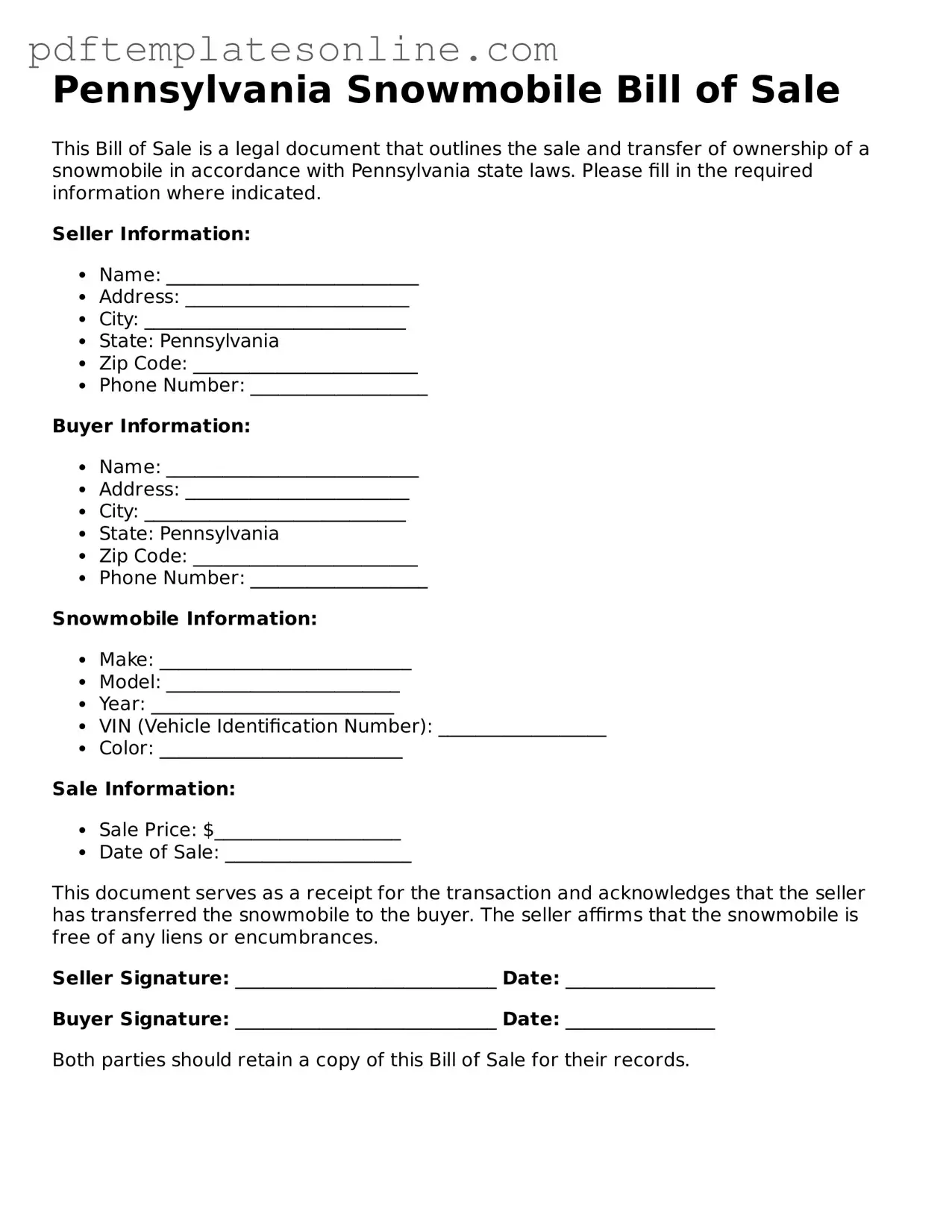Filling out the Pennsylvania Snowmobile Bill of Sale form can be straightforward, but many people make common mistakes that can lead to complications later. One frequent error is not providing complete information about the snowmobile. Buyers and sellers should ensure that all details, including the make, model, year, and Vehicle Identification Number (VIN), are accurately recorded. Missing this information can create confusion and may lead to issues with registration.
Another mistake is neglecting to include the purchase price. It’s essential to document the agreed-upon amount clearly. Without this detail, the transaction may be questioned, and it could complicate tax matters. Both parties should agree on a fair price and ensure it is reflected on the form.
People often overlook the importance of signatures. Both the buyer and the seller must sign the Bill of Sale for it to be valid. A missing signature can render the document ineffective, leaving both parties vulnerable to disputes. Always double-check that both signatures are present before finalizing the sale.
In addition, failing to date the form is a common oversight. The date of the sale is crucial for record-keeping and can affect the timing of registration. Without a date, it may be unclear when the ownership transfer took place, which can lead to legal challenges.
Another mistake is not providing contact information. Including phone numbers and addresses for both parties can help in case any issues arise after the sale. This information can facilitate communication and ensure a smoother process if questions come up later.
People sometimes forget to check for any liens or outstanding loans on the snowmobile. If the snowmobile is still under a lien, the seller may not have the legal right to sell it. Buyers should always verify that the title is clear before proceeding with the transaction.
Additionally, some individuals fail to keep a copy of the completed Bill of Sale. It’s important for both the buyer and seller to retain a copy for their records. This document serves as proof of the transaction and can be useful for future reference, especially when registering the snowmobile.
Lastly, not reviewing the form for accuracy before submission is a mistake many make. Take the time to go through each section carefully. Errors can lead to delays in registration or even legal issues down the line. A thorough review can save time and headaches in the future.
